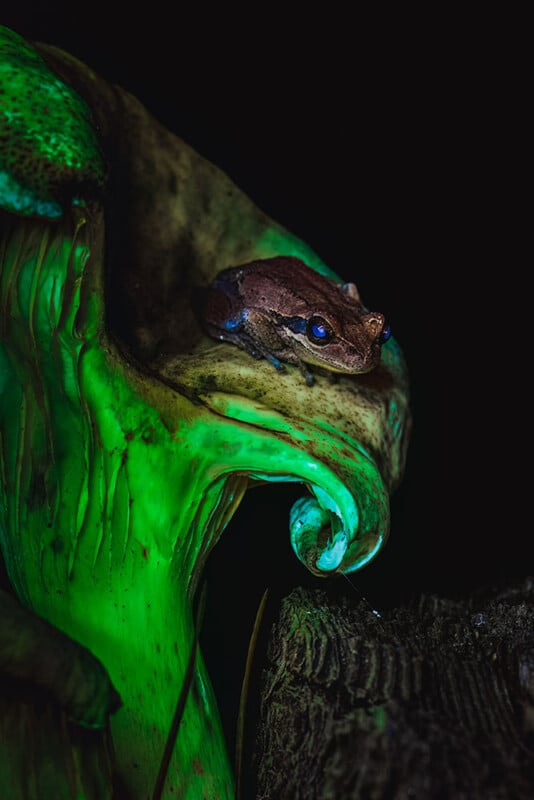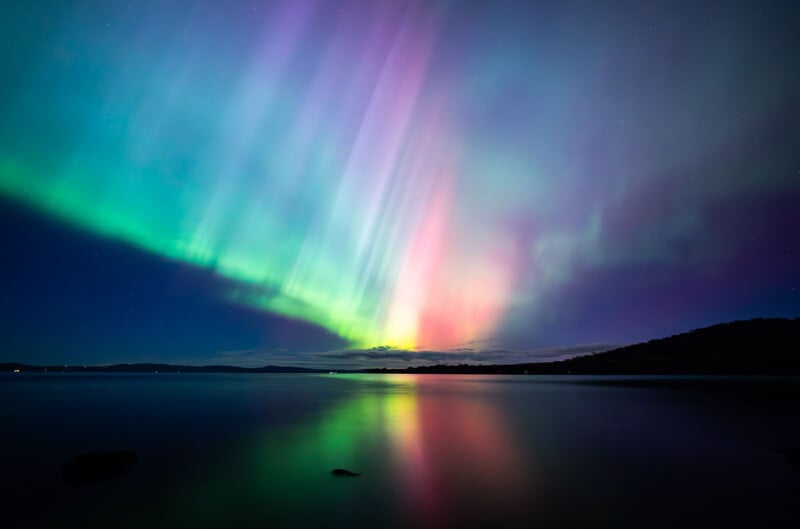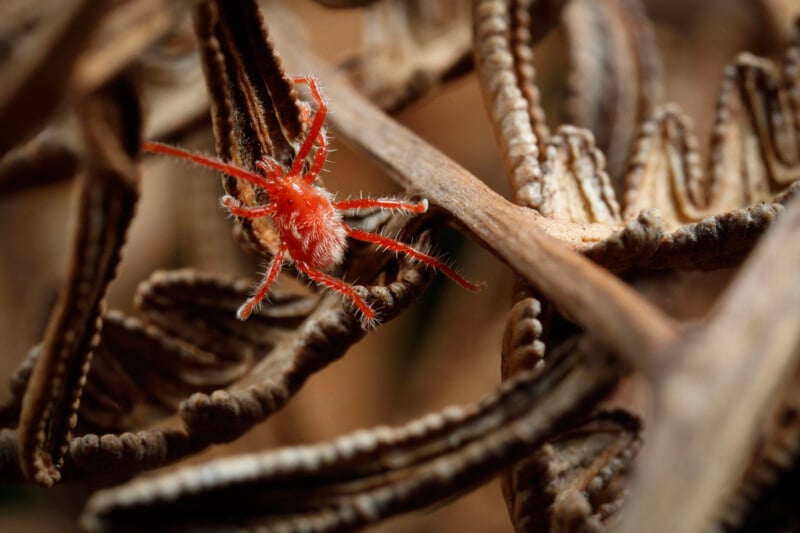Glowing Frog on a Glowing Mushroom Wins Science Photo Competition
![]()
A photo of a biofluorescent frog sitting on a bioluminescent mushroom has won the People’s Choice Award at the Beaker Street Science Photography Prize 2024 based in Tasmania.
The blue glow in the tree frog’s eyes and on its body occurs because it has a chemical surface that absorbs light at one wavelength and reemits it at another. The frog is sitting on a funnel-shaped ghost fungus, so-named because of its bioluminescent glow at night.

Live Science reports that photographer Toby Schrapel came across the two glowing organisms on a pine plantation in Tasmania while searching for a rare mushroom. “When I first saw them together I thought to myself this is my chance to get something absolutely magical,” Schrapel tells Live Science.
Taking home the Judge’s Choice Winner was Andrea Williamson for her look at the endangered red handfish’s unique beginnings.











The Beaker Street Science Photography Prize 2024 is part of Beaker Street Festival – a week-long celebration of science for adults in lutruwita/Tasmania each August. More information can be found on the festival’s website.